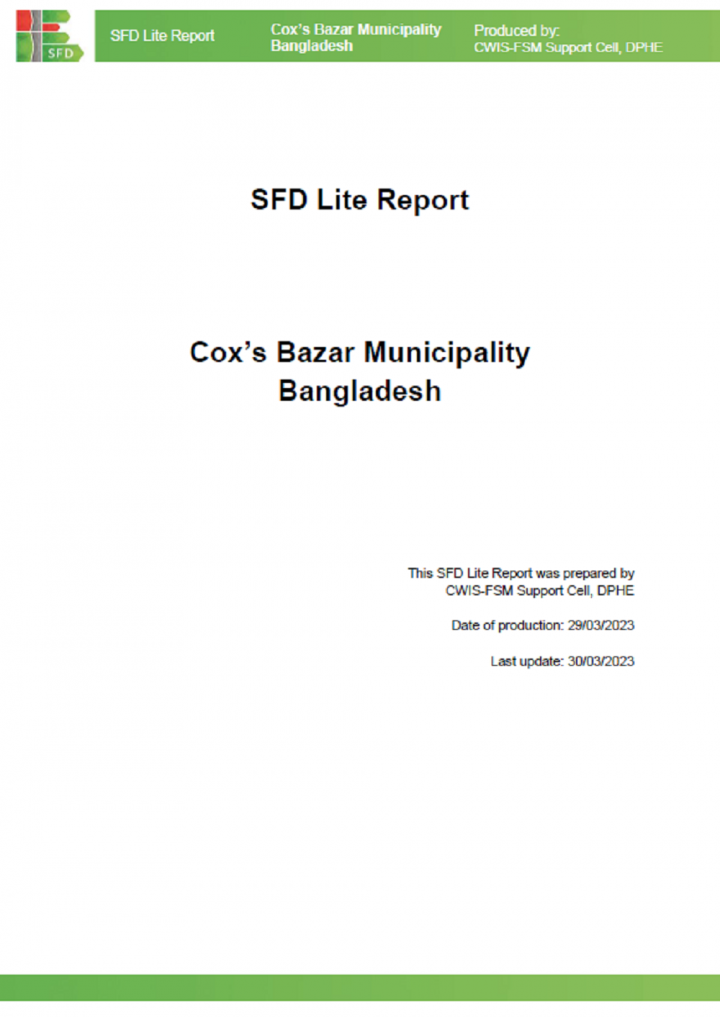
Published in: 2023
Pages: 13
Publisher:
CWIS-FSM Support Cell, DPHE
Author:
CWIS-FSM Support Cell, DPHE
Uploaded by:
SuSanA Admin
843 Views
58 Downloads
Cox’s Bazar is a fast-growing city, which is 402 km away from Dhaka city and it is well connected with road, and airways. It is bounded by the Bakkhali River in the north and east and by the Bay of Bengal in the west. Cox’s Bazar Municipality was established in 1869. it was upgraded to class A municipality in 1972. Cox’s Bazar is one of the 53 municipalities in the country.According to the population census in 2011 by the Bangladesh Bureau of Statistics (BBS), the Cox’s Bazar Municipality population was 167,477. The urban population growth in Cox’s Bazar is 3.5% per year. Considering 62% floating population (which are mainly tourist), comes to the city every weekend and holiday, the present (2020) population is estimated to be around 418,576.
The city does not have a dedicated sewerage system and most sanitation systems available in the town are classified as onsite systems (95.1%). The main types of toilet facilities are septic tanks connected to a soak pit, to an open drain, to a water body or to open ground, lined tanks or lined pits, with no outlet or overflow and unlined pits.
The outcome of the SFD graphic shows that only twenty percent (20%) of the excreta flow is classified as safely managed, and the remaining eighty percent (80%) is classified as unsafely managed.
Bibliographic information
CWIS-FSM Support Cell, DPHE (2023). SFD (level 1) Report - Cox's Bazar Municipality, Bangladesh. CWIS-FSM Support Cell, DPHE
Filter tags
English Politicians and local decision makers Practitioners SFD Report South Asia














